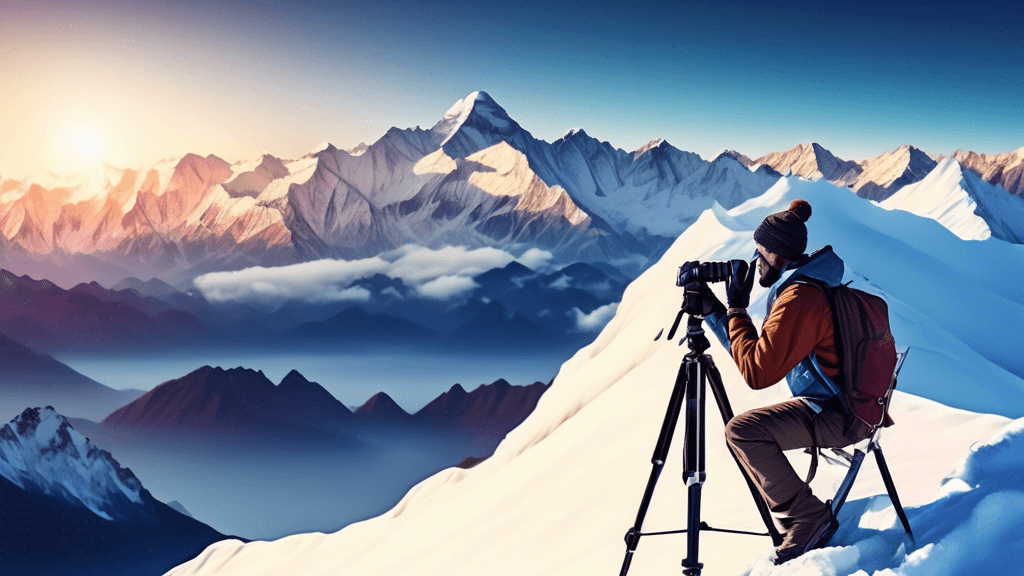
Capturing Heights: Techniques for High Elevation Photography
Share
Understanding High Elevation Photography
High elevation photography offers a unique challenge and reward to photographers. Capturing landscapes from a high vantage point not only provides spectacular views but also brings together elements of adventure and artistry. This type of photography involves shooting from high altitudes—often in mountains or from aircraft—that presents a distinct set of challenges and opportunities. Who is this for? Whether you're a seasoned photographer looking to push your boundaries, or a novice eager to explore different aspects of photography, understanding how to effectively capture images at high elevations can significantly enhance your photographic skills.
Challenges of High Elevation Photography
Before diving into the techniques, it's important to consider the challenges that photographers might face when shooting at high elevations:
- Thin Air: The higher you go, the thinner the air becomes, which can make breathing difficult and fog up camera lenses unexpectedly.
- Extreme Weather Conditions: Weather at high altitudes can be unpredictable, with sudden changes that can affect lighting, visibility, and safety.
- Equipment Handling: Cold temperatures can affect camera operation and battery life, making it crucial to prepare and protect your equipment.
Essential Techniques for High Elevation Photography
1. Preparing Your Gear
Effective high elevation photography starts with proper preparation. Here are some key tips:
- Use a UV filter to protect the lens and improve image quality by reducing the haze often encountered at high altitudes.
- Bring extra batteries and keep them warm, as cold weather can drain battery life rapidly.
- Ensure your camera bag is weather-sealed to protect from the elements.
2. Mastering Exposure and Composition
The intensity of sunlight at high altitudes can be very strong, leading to overexposed photos. To counter this, photographers must master the art of exposure. Shooting in manual mode and checking histograms on your camera can help ensure that you're capturing well-balanced images. Furthermore, the composition plays a critical role in high elevation photography. Since landscapes seen from elevated viewpoints can be vast and overwhelming, employing techniques such as the rule of thirds and leading lines can help create more engaging and harmonious compositions.
3. Timing Your Shots
Lighting is a crucial aspect of photography, especially at high elevations where the sun can set or rise quickly and dramatically. Understanding the golden hours—shortly after sunrise or before sunset—can define your shots. The soft, diffused light during these times provides excellent conditions for capturing high elevation landscapes with rich colors and long shadows that define textures and shapes.
Expert Insights
The best way to capture the magic of high elevations is to be patient and persistent, says John Doe, a renowned high elevation photographer. Sometimes, you spend hours waiting for the perfect light or weather conditions. It's all about the right moment.
Enhancing Your High Elevation Photography
No matter your level of experience, continually improving your technique is essential. Study the work of established high elevation photographers to understand different styles and techniques. Additionally, never underestimate the power of practice; the more you shoot, the better you will get. Experiment with different settings, angles, and compositions to discover what works best for the specific character of high elevation landscapes you are aiming to capture.
Conclusion and Call to Action
High elevation photography isn't just about capturing stunning vistas—it's an adventurous pursuit that combines technical skills, creative vision, and a love for the great outdoors. While the challenges are real, the reward of capturing breathtaking images from above the world is unparalleled. So, are you ready to reach new heights in your photography journey? Grab your gear, embrace the challenges, and start capturing the extraordinary vistas from up high!
Remember, each image you take not only contributes to your personal growth as a photographer but also serves as a testament to the majestic beauty of our natural world. Let's step out, scale those heights, and capture the wonder of elevation through our lenses.





